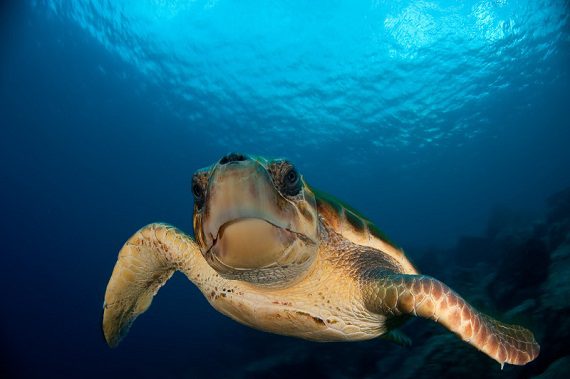July 10, 2014
Victory for Loggerhead Sea Turtles: Vast Area of Habitat Gains Protection
BY: Brianna Elliott
Today, the federal government designated thousands of miles of beaches and open ocean around the southeastern and Mid-Atlantic United States as critical habitat for loggerhead sea turtles. The area, which covers 685 miles of nesting beach from North Carolina to Mississippi and more than 300,000 square miles of ocean habitat from the Atlantic Ocean to the Gulf of Mexico, is the largest designation to-date of critical habitat—making this ruling a victory and a historic step for loggerhead sea turtle recovery. Loggerheads are the second-largest marine turtle species and are aptly named for their blunt heads and powerful jaws.
“While migrating thousands of miles in the course of their lifetimes, loggerheads face persistent threats from fishing gear, pollution and climate change,” Oceana marine scientist Amanda Keledjian said in a press release. “This critical habitat designation is essential for the future survival and recovery of sea turtles in the U.S. and will ensure that populations are more resilient in the future.”
The critical habitat designation requires federal activities in these areas to be reviewed to ensure they don’t impact loggerhead survival and recovery. It does not restrict public access to beaches and waterways.
The new beach protection includes 84 percent of all known nesting areas in the U.S., and the ocean habitat includes protections for five types of habitat: near-shore reproductive, breeding, migratory corridors, winter habitat, and Sargassum habitat. Sargassum is a type of seaweed that provides food, cover, and warm water for optimal growth of young loggerheads.

A loggerhead swimming in the Atlantic. (Photo: Oceana / Carlos Suárez)
While the rule marks significant progress towards protecting loggerheads, it wasn’t as comprehensive as conservationists had hoped. The designation only protects near-shore habitat for one mile off nesting beaches—despite science showing the importance of habitat at least three miles from beaches for nesting females—and it also failed to identify critical habitat for the endangered North Pacific Ocean loggerhead subpopulation, which is at risk from fishing activities in areas where they commonly come to feed.
Loggerhead sea turtles were first declared endangered in 1978, but their critical habitat was never protected as required by the Endangered Species Act. Today’s rule comes as a direct result of a lawsuit filed in January 2013 by the Center for Biological Diversity, Oceana, and Turtle Island Restoration Network after the government failed to respond to petitions to strengthen protections dating back to 2007.

A loggerhead nesting on Bald Head Island, NC. (Photo: Oceana / Jeff Janowski)
Northwest Atlantic loggerhead sea turtle hatchlings spend up to 12 years in the open ocean after hatching on beaches. They then return to coastal areas, where they stay until they reach sexual maturity around 35 years of age and seek out beaches to nest. It’s estimated that only 1 in 1,000 loggerhead sea turtle hatchlings make it to adulthood.
Oceana works to protect loggerheads and other sea turtle species by campaigning to reduce sea turtle bycatch, protect critical habitat, and advocate for strong legislation to protect sea turtles. Click here to learn more about Oceana’s work, and for more information on the history of the critical habitat designation, click here.



